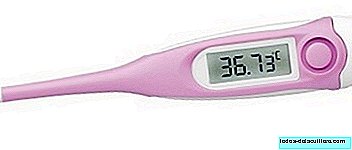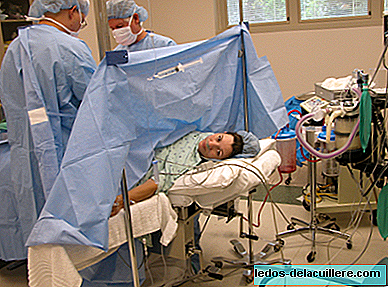
A simple way to know our menstrual cycles is to track our basal temperature, through which analysis we will know when we have ovulated and if a pregnancy has occurred or, on the contrary, menstruation is about to appear. Although we could use any type of thermometer that we have at home, in the market we have thermometers specially designed for this purpose: basal thermometers.
Thanks to them, we can take our basal temperature with greater comfort and precision, something important if with these data we are going to make a graph, since the temperature variations that are recorded throughout the cycle are small and a deviation could alter our analysis.
A basal thermometer is a thermometer specially manufactured to take the basal temperature: our body temperature just wake up, when we have had a sufficient rest (of at least about four hours) and without moving from the bed, just extending the arm to put on the thermometer (any movement could alter it).
The basal temperature is kept low at the beginning of the cycle to rise once ovulation has occurred, as progesterone (a hormone that dominates ovulation) raises the temperature. If we take our basal temperature properly, we can prepare a graph, which will allow us to know our fertile days so that we can plan a pregnancy or avoid it. In addition, the elaboration of the graphs during several cycles will help us to better understand our body, being a wonderful tool of self-knowledge for women who have irregular cycles.
Since the changes in basal temperature that we suffer throughout the cycle are only a few tenths, it is important that the thermometer we use is very precise. The basal thermometers are specially designed to take the temperature of our body at rest, so that they allow a simpler reading, its measuring range is smaller and allows to specify two or more tenths of temperature.
There are two types of basal thermometers: digital and glass.
Digital basal thermometers have high accuracy (usually +/- 0.01 ° C), a larger viewfinder and allow temperature recording with two or more tenths.
Basal glass thermometers contain gallium instead of mercury, which was banned because of its high toxicity.
Since they are specially designed for taking our temperature at rest, its measuring range is usually between 35 and 38 ºC, allowing a much simpler reading without forcing the view and with several decimals.
Especially during the first cycles and until we are familiar, we will start recording our temperature from the first day of it, which corresponds to the first day of menstruation. When we have more practice we can start around day 5 of the cycle or even later if we are interested in knowing only the moment we ovulate.
We will write down not only the recorded temperature but also any other associated symptoms (for example, headache, sensation of ovarian pain, etc.), whether or not we have had sexual intercourse and also if there has been any setback that may have altered it (having spent the night, being sick, etc.)
In Babies and More we offer you a practical example to interpret the table that will surely be useful for you.
If you do not want to do it on paper, you can make a table in your own electronic format or use websites that make it easier for you to write down and interpret temperatures, such as 28dias.es.
Photos | Amazon.com | Amazon.de On Babies and more | How to take the basal temperature to know the fertile days? | My fertile days: practical example to interpret the baseline temperature table












